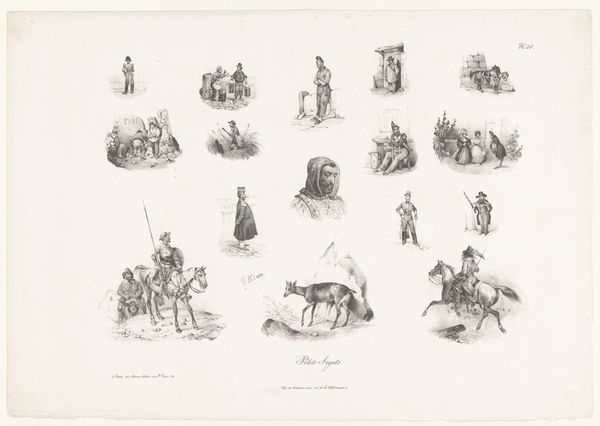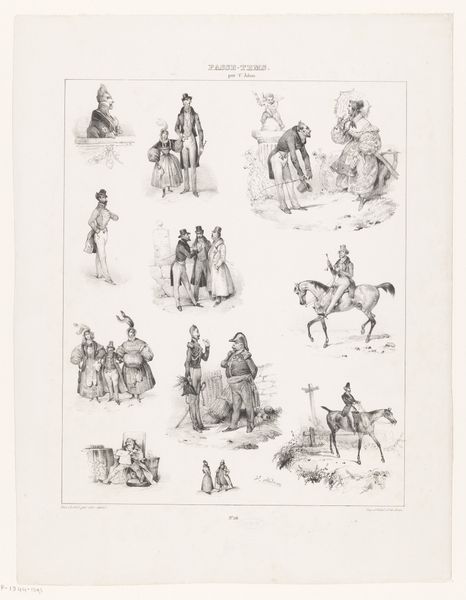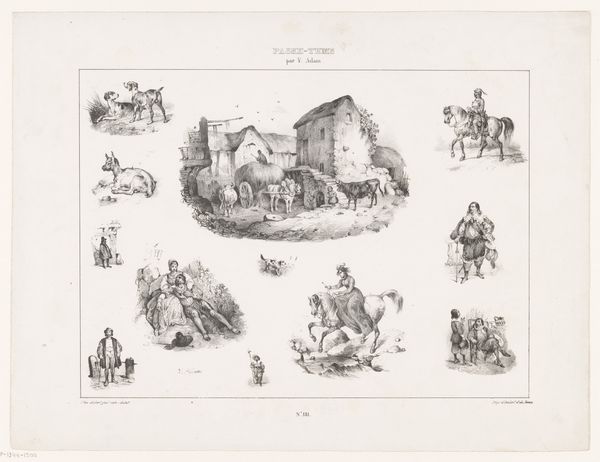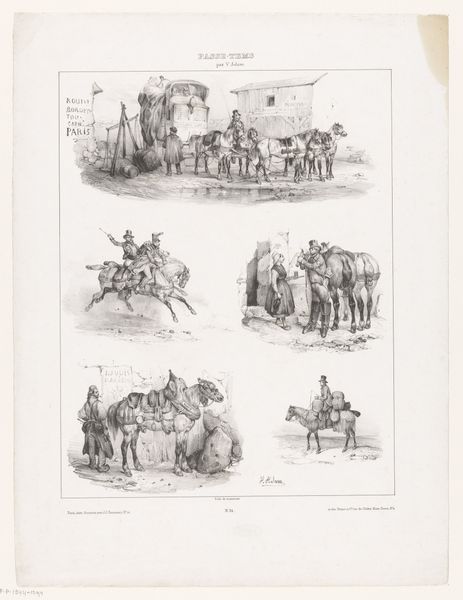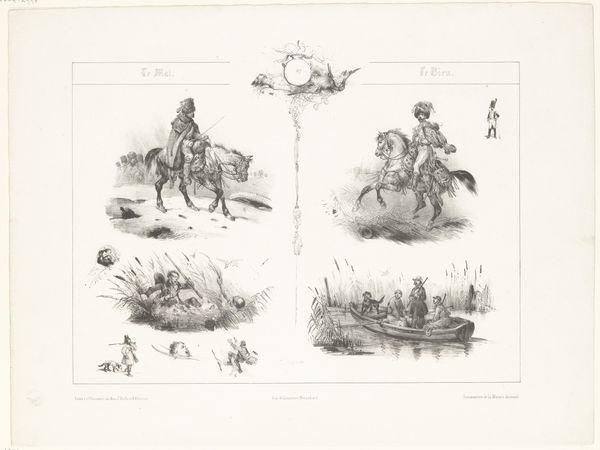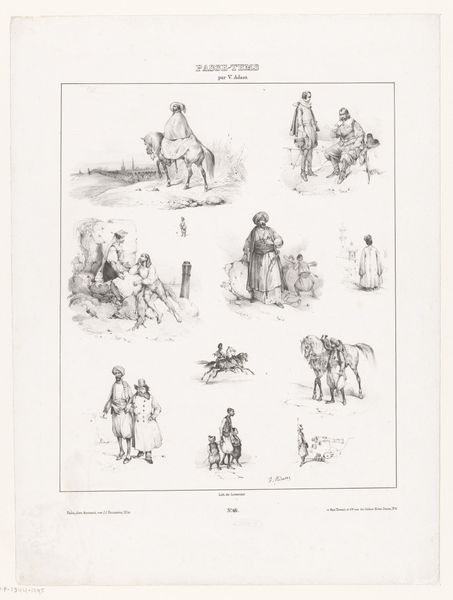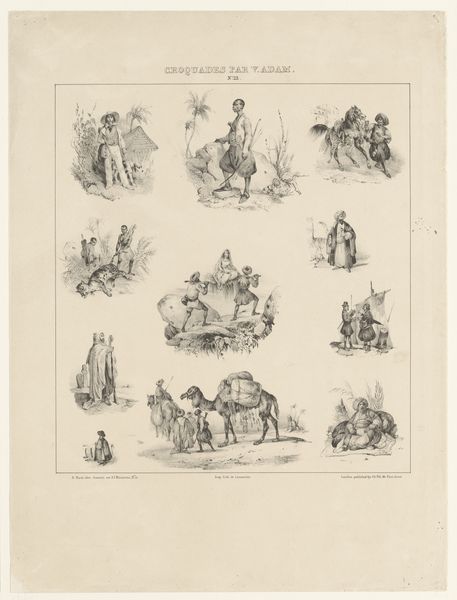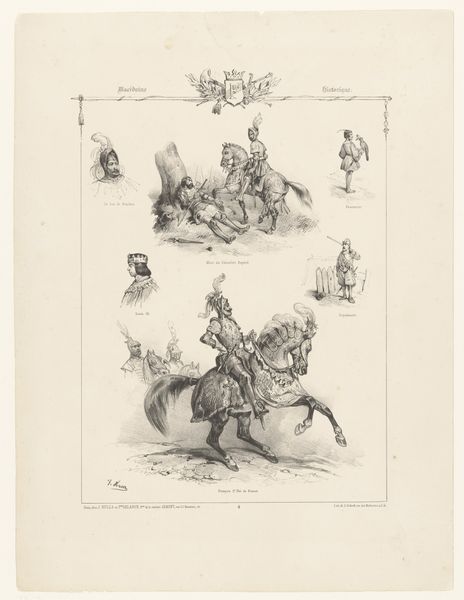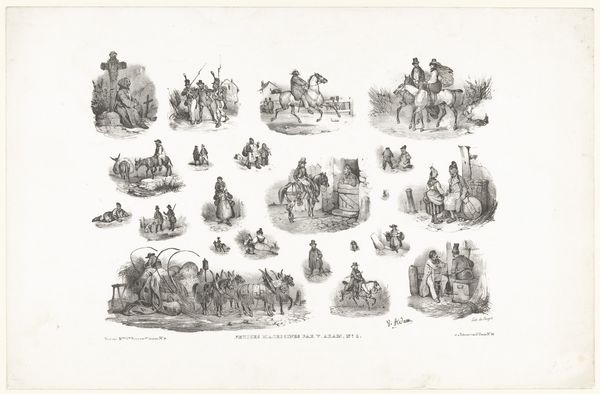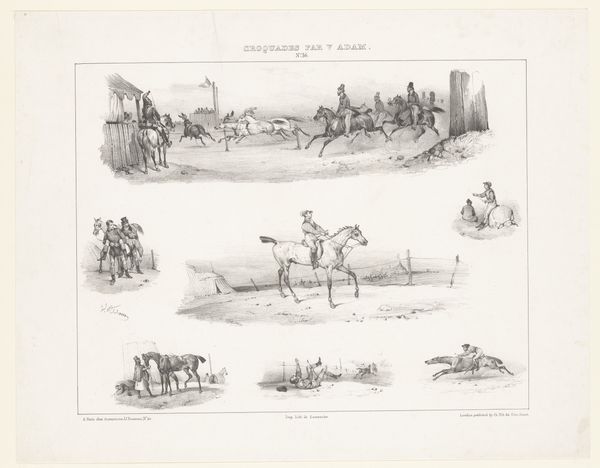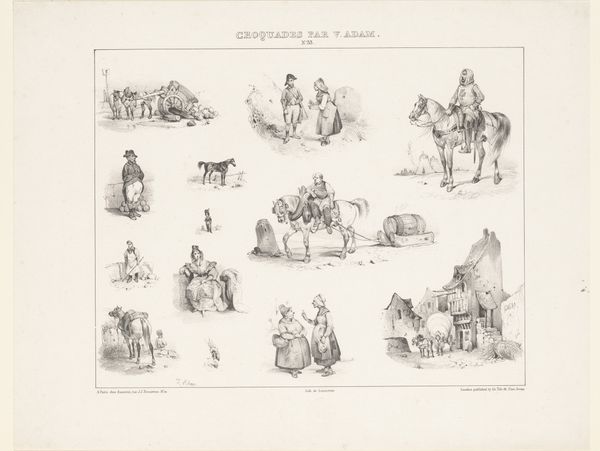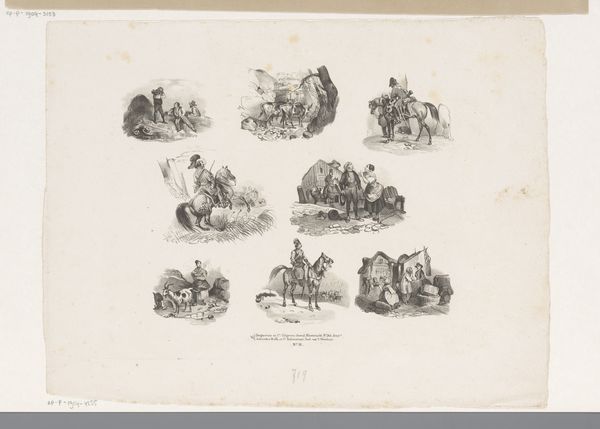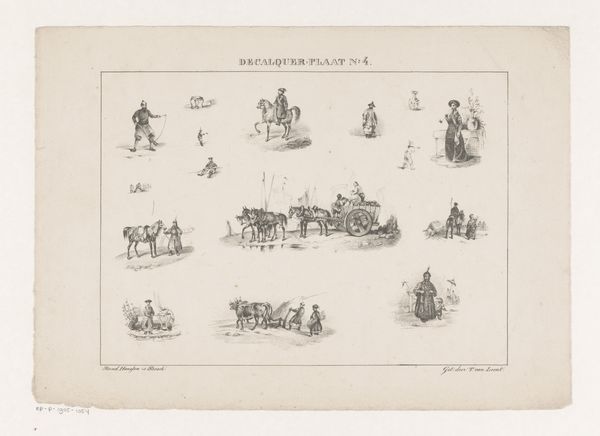
drawing, lithograph, print, pen
#
drawing
#
narrative-art
#
lithograph
# print
#
landscape
#
figuration
#
romanticism
#
line
#
pen
#
cityscape
#
genre-painting
Dimensions: height 274 mm, width 364 mm
Copyright: Rijks Museum: Open Domain
Curator: What a striking contrast! This lithograph, "Voorstellingen van kwade en goede dingen in het leven," by Victor Adam, dating back to 1839, is a fascinating exploration of morality through imagery. Editor: Yes, I immediately noticed the dichotomy; it is separated clearly with an implied 'before' and 'after' format. The light and shadow play is remarkable, giving the images under "Le Mal" a sense of weight and gloom compared to the airiness of "Le Bien". Curator: Exactly! Adam masterfully uses the print medium to dissect societal values. If you look closely at the lithographic technique, the crisp lines showcase an interesting perspective on the consumer appeal of printed media intended to deliver these moral tales. Editor: Absolutely. There’s also this commentary on class – notice the riders are finely dressed figures enjoying leisurely rides, compared to the ill fortune befalling others? It evokes a specific social hierarchy and highlights how even recreation is dictated by one's economic standing. Curator: Precisely! And think about the function of prints like this. They were mass-produced objects meant to disseminate ideas widely. Consider how accessible these representations were to different social classes and how they reinforced dominant narratives about virtue and vice within specific institutional settings, like the home. Editor: And you cannot forget the animals—I'm intrigued by the slumped horse under 'Le Mal,' compared to the noble steed being cared for on the 'Le Bien' side. It's not just human morality but a reflection of how humans treat animals, which can reflect the value that’s placed upon labor in 19th century life. Curator: Good point, particularly in light of expanding cities. The print serves not just as art, but also provides us today a social artifact speaking to values, economic structures, labor, and, naturally, class relationships during the 1830s. Editor: It's striking how much this lithograph, through simple visual allegories, offers such depth in examining complex societal and moral structures and really makes me think about how value judgements in artwork help frame contemporary values. Curator: I agree; the print becomes an exercise in not only producing art, but circulating and negotiating social behaviors within the context of 19th-century Europe. Editor: Thanks to the social insight, I won’t soon forget the themes of moral contrasts within the production of this piece.
Comments
No comments
Be the first to comment and join the conversation on the ultimate creative platform.
